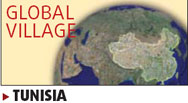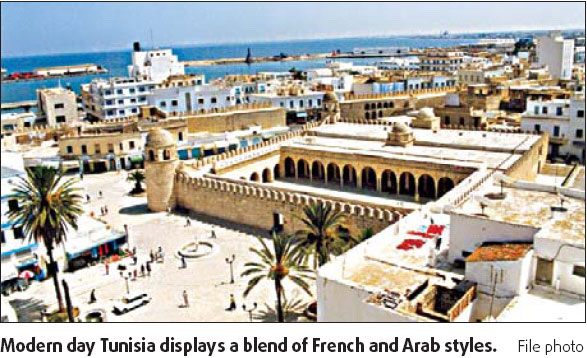Home to Hannibal, inspiration for Star Wars
When scouring the planet in search of suitable scenery for the fictitious Star Wars city of Tatooine, director George Lucas ultimately decided that "the force" was strong with Tunisia.

The North African country's scorching sands provided a picturesque landscape for the scenes depicting the desert-like home planet of Darth Vader and Luke Skywalker.
Many of the original props from the movie remain on the outskirts of Matmata, the desert city where the movie was filmed, including the giant skeleton of one of Lucas' imaginative beasts.
The prospect of sleeping in Luke Skywalker's home, which is now a hotel, or drinking in the bar that Han Solo once frequented has made Matmata a metaphorical Mecca for Star Wars junkies on a Haj to Tunisia.
Sandwiched between the threshold of the Saharan desert and the sapphire waters of the Mediterranean Sea, Tunisia's exotic landscape has also been called home by civilizations from long long ago, in a galaxy not so far away.
One of the most notable civilizations once occupying Tunisian lands was the ancient powerhouse Carthage. During 218 BC, an army of war elephants led by General Hannibal left Carthage to ravage the Roman armies in Italy, starting the second Punic War and bringing Rome to its knees.
Hannibal's skillful use of the surrounding landscape and cavalry during the war has made him recognized as one of the greatest generals throughout history and earned him the title "father of strategy".
After losing the second Punic War, Tunisia was occupied by Romans during a time-period when the fertile coastal soils of the land earned the North African province the nickname of "bread-basket for the Roman Empire".
Today, the Roman ruins found in Dougga and El Jem are amongst the best places in Africa to get a glimpse of the fallen empire's remains.
Accompanying the scores of Roman mosaics found in the National Museum of Bardo, Tunisia's largest museum, are relics from periods of time when the country was inhabited by the Phoecians, Vandals, Byzantines, Turks, Spanish and French.
Tunisia became officially known to the world as the Tunisian republic in 1956, after expunging the French colonists that had settled the lands in 1881. They celebrate several national holidays throughout the year recognizing their freedom, the largest being their official Independence Day on March 20.
Modern day Tunisia exhibits a blend of both French and Arab styles. This is best seen in the cuisine, which fuses French sophistication and love for the baguette with Arab tendencies towards lamb and Middle Eastern spices.
While French is still spoken by a small percent of the population, mainly in the country's capital Tunis, a majority of the French-speaking citizens fled Tunisia shortly after bouts of violence following the countries declaration of independence. This left a majority of Arab-speakers.
A country rich with musical traditions, the Malouf, a musical style rooted in Spain, has been described as an "emblem of Tunisia's national identity". Many citizens of Tunisia are considered amateur musicians, often found in the streets sitting in a circle of friends playing traditional Tunisian tunes.
Todd Balazovic

(China Daily 03/28/2008 page19)














